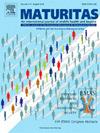Interpretable machine learning models to predict decline in intrinsic capacity among older adults in China: a prospective cohort study
IF 3.6
2区 医学
Q2 GERIATRICS & GERONTOLOGY
引用次数: 0
Abstract
Background
Monitoring intrinsic capacity and implementing appropriate interventions can support healthy aging. There are, though, few tools available for predicting decline in intrinsic capacity among older adults. This study aimed to develop and validate an interpretable machine learning model designed to identify populations at elevated risk of a decline in intrinsic capacity.
Methods
Using data from the China Health and Retirement Longitudinal Study baseline (2011) and 4-year follow-up (2015), a total of 822 participants were randomly allocated to a training set and a testing set at a 7:3 ratio. Five machine learning methods were employed to train the model and assess its performance through various metrics. The SHapley Additive exPlanation method was subsequently used to interpret the optimal model.
Results
The 4-year incidence of decline in intrinsic capacity among the older adults in the sample was 44.6 % (n = 367). Nine variables were screened for model construction, among which eXtreme gradient boosting demonstrated the best predictive performance, achieving an area under the receiver operating characteristic curve (AUC) of 0.715 (95 % CI 0.651–0.780) in the testing set. The SHapley Additive exPlanation method identified educational level, smoking, handgrip strength, self-rated health, and residence as the top five significant predictors.
Conclusions
The developed model can serve as a highly effective tool for primary care teams to identify older adults with early signs of decline in intrinsic capacity, facilitating the provision of subsequent screening and tailored interventions for intrinsic capacity.
可解释的机器学习模型预测中国老年人内在能力下降:一项前瞻性队列研究
监测内在能力和实施适当的干预措施可以支持健康老龄化。然而,很少有工具可以预测老年人内在能力的下降。本研究旨在开发和验证一个可解释的机器学习模型,该模型旨在识别内在能力下降风险较高的人群。方法使用中国健康与退休纵向研究基线(2011年)和4年随访(2015年)的数据,共822名参与者按7:3的比例随机分配到训练集和测试集。采用五种机器学习方法来训练模型,并通过各种指标评估其性能。随后采用SHapley加性解释法对最优模型进行解释。结果样本中老年人内在能力下降的4年发生率为44.6% (n = 367)。筛选了9个变量进行模型构建,其中eXtreme gradient boosting的预测效果最好,在测试集中获得了0.715 (95% CI 0.651-0.780)的受试者工作特征曲线下面积。SHapley加性解释方法确定了教育水平、吸烟、握力、自评健康和居住地是前五个显著的预测因素。该模型可作为初级保健团队识别具有内在能力下降早期迹象的老年人的高效工具,有助于提供后续筛查和针对内在能力的量身定制干预措施。
本文章由计算机程序翻译,如有差异,请以英文原文为准。
求助全文
约1分钟内获得全文
求助全文
来源期刊

Maturitas
医学-妇产科学
CiteScore
9.10
自引率
2.00%
发文量
142
审稿时长
40 days
期刊介绍:
Maturitas is an international multidisciplinary peer reviewed scientific journal of midlife health and beyond publishing original research, reviews, consensus statements and guidelines, and mini-reviews. The journal provides a forum for all aspects of postreproductive health in both genders ranging from basic science to health and social care.
Topic areas include:• Aging• Alternative and Complementary medicines• Arthritis and Bone Health• Cancer• Cardiovascular Health• Cognitive and Physical Functioning• Epidemiology, health and social care• Gynecology/ Reproductive Endocrinology• Nutrition/ Obesity Diabetes/ Metabolic Syndrome• Menopause, Ovarian Aging• Mental Health• Pharmacology• Sexuality• Quality of Life
 求助内容:
求助内容: 应助结果提醒方式:
应助结果提醒方式:


